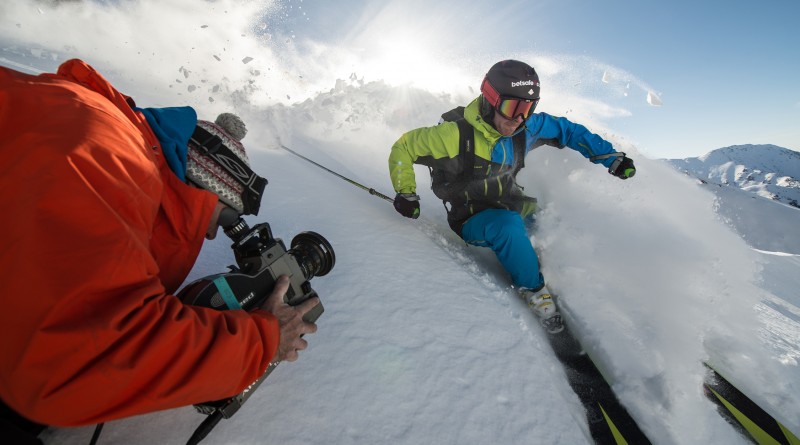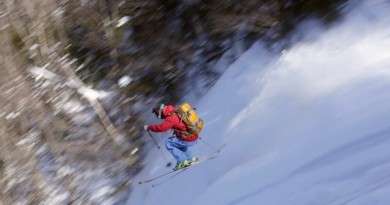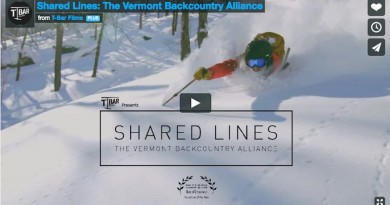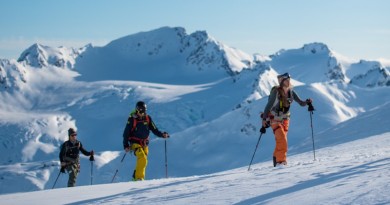Meet the Man Behind Warren Miller’s No Turning Back
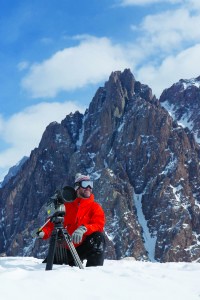
We sat down to talk with Chris Patterson, a cinematographer and director for the popular and widely anticipated Warren Miller Films.
Every winter, thousands of skiers and riders across the country eagerly await the latest release from one of the snow sport’s most widely recognized names. For 65 years, the Warren Miller has come to define the winter sports movie and has inspired generations of ski bums with surreal footage of world-class skiers and riders doing what they do best in locals such as Norway, Colorado, Alaska, Greenland and more.
The man behind this year’s film, No Turning Back, is Chris Patterson, a cinematographer and director for Warren Miller Films. Patterson has been shooting for the Warren Miller series of videos since 1993 and continues to shoot commercials and feature-length films when he’s not on skis. Patterson spoke with Vt. Ski & Ride Magazine about his experience working with Warren Miller Entertainment and some of the techniques he uses when making the films anticipated by many.
Vermont Ski & Ride: Warren Miller ski movies have been a yearly feature for 65 years. What is it that makes the Warren Miller experience so unique?
Chris Patterson: There are loads of ski movies out there and they’ve all cultivated their own audiences and then there’s the whole world of YouTube and everything that exists online. The thing that has stood true for 65 years for our films was the idea of seeing it at the theater. We make it with that in mind and shoot for the big screen. We don’t’ want it to be a nonstop montage of just action, action and more action. Of course if you want that, you can get that elsewhere. We try and make it a greater piece of entertainment that people can walk away from feeling inspired, fulfilled and feeling like something that checks all of the boxes for entertainment.
VTS&R: The film is really a who’s-who in the skiing world with big-time skiers like Sierra Quitiquit, JT Holms and more. How do you guys decide who’s going to feature in the next release?
CP: It’s a funny combination of things. It has to do with their talent, obviously and what they can bring either on skis, snowboards or in JT Holms’ case, ski-riding and base-jumping. But it also has a lot to do with the personalities and the characters that each of the people can bring outiside of the skiing. I find that so many of the people watch, for example, that Switzerland piece with JT Holms and Ueli Kestenholz and have a hard time believing that these guys are having such an articulate interview about their experience in the mountains and the philosophy behind it. Most people would think their absolutely nuts. But we look for two or three people that can balance the entertainment so viewers feel like they get to know these people. After watching they realize these people aren’t that much different than you or I, they just perform on a totally different.
VTS&R: Could you describe some of the techniques you use when you’re shooting?
CP: For years we shot for film cameras and we’ve had to make contraptions for the smaller film cameras to go on helmets and make them mobile. But things changed dramatically when the GoPro Cameras came about. People are all in-tune with the lingo of these devices but there are other even higher resolution cameras and it’s been amazing what we’ve been able to do with those. I’m an old film snob and in love with what we can do with film but it has truly been amazing what we can get with these digital cameras today. In something like speed-riding or any of our segments are very reliant on the GoPros, whether that’s seeing the faces of the athletes or using those cameras to film the athletes. In Japan, we used all sorts of contraptions that we’ve built over the years including one I call “The Unicorn,” that goes nearly three feet of the top of their helmet to look back at their faces. We’ve embraced the new technology but we haven’t gone too overboard with it. I don’t want the photography and the technique to distract the viewers from what’s going on. I just want them to enjoy it and not think about the technology, but rather how deep the snow is or how the shots of the guys speed-riding is like a frozen version of Star Wars.
VTS&R: This all sounds like a complex logistical operation. How long does it take to shoot something like this?
CP: We tend to spend about two weeks at every location and that’s to get the benefit of some nice weather and quality snow. We’re out there from sunrise to sunset everyday doing something different. We could always spend more time but there are the constrictions of budget and schedule. Really, the biggest constriction is the length of the winter. That’s why we’re always on the move going to new places.
VTS&R: And how much does it cost to make a movie like this?
CP: All told, I think it’s around $1 million, which is a lot for a ski movie but in the realm of movies is really not that much. Considering we’re bouncing all over the globe, we spend it wisely. We don’t have big crews and we’re very resourceful. We want every bit of that money to go on the screen whether it’s hiring good people, using the best equipment or traveling a little futher. Every penny goes to what you’re seeing on the screen rather than over-the-top things that cost money but don’t do anything for the picture.
VT&R: It seems like the unsung heros of the film are the men and women that are shooting out in the cold and may not be able to ski as much. Who else do you guys have helping out behind the scenes?
CP: Everyone who works on the movie is super passionate about the sport and we have a great group of people that do it. Myself and another guy, Tom Day do all the shooting, along with a few other cameramen that we bring in here and there. We have a couple of editors who work until the very last minute when we have to pry the movie out of their hands. That carries over into guys that select the music for it and the production side of things, getting us there, back and supported the entire time. It’s really about six people all told that make the movie. It’s not a big crew and everyone tends to wear a lot of hats. It was just after New Year’s when we pulled the trigger and we worked on it until September. The actual shooting takes place from January to late April.

